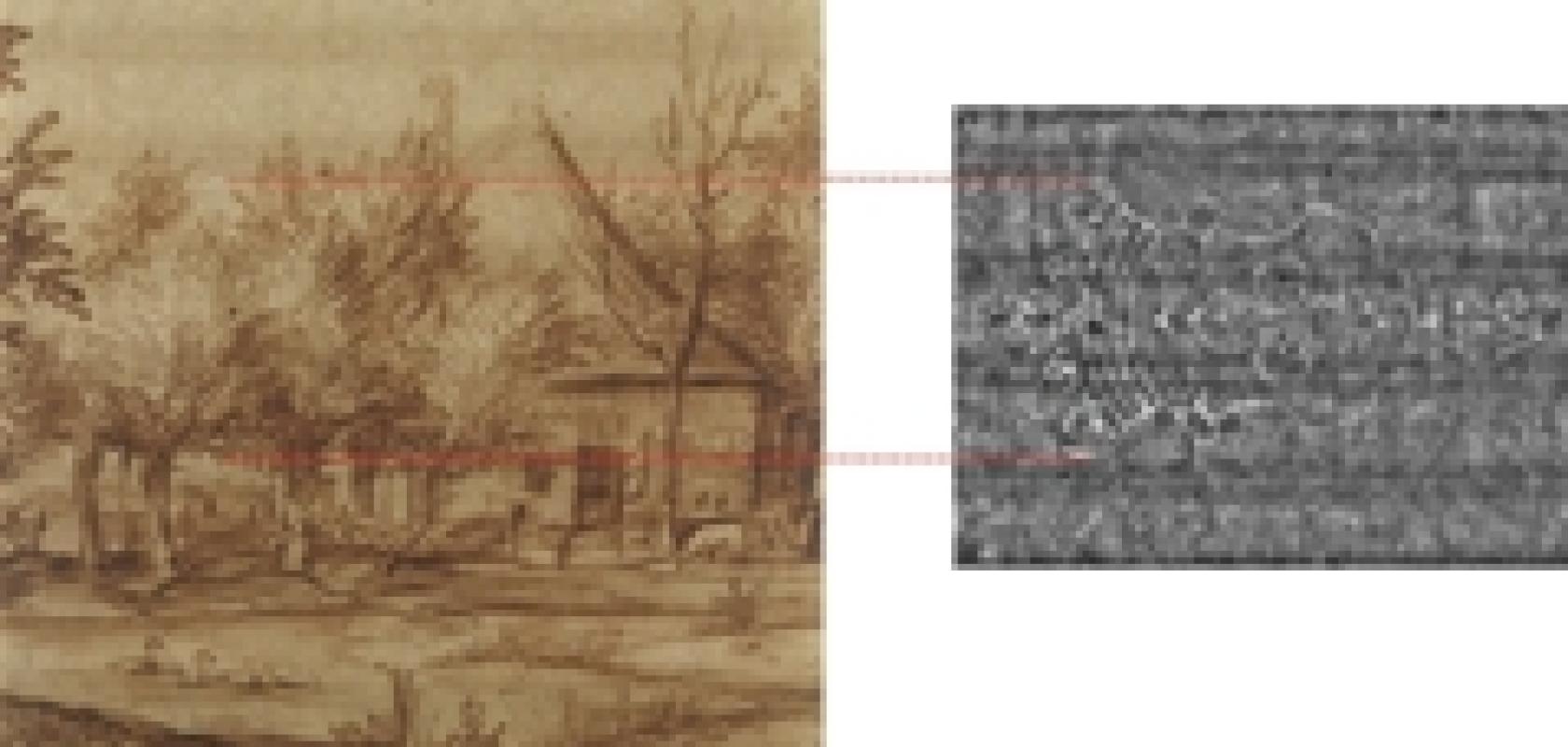Fraunhofer scientists in Germany have used infrared cameras to date 60 sketches from Rembrandt's studio.
The work, carried out by the Fraunhofer Institute for Wood Research, Wilhelm-Klauditz-Institut (WKI) in Braunschweig, exposed the watermark on the paper by illuminating the art with infrared light.
The research was conducted along with colleagues at the Herzog-Anton-Ulrich-Museum and the Institute for Communications Technology (IfN) at the Technical University of Braunschweig.
‘We didn’t scan the papers with visible light, but instead used infrared light, or thermal radiation,’ said researcher Peter Meinlschmidt at the WKI. ‘The frequently used iron gall ink is transparent under this light. This means you see only the watermark without the ink or paint getting in the way.’
The artworks are heated very subtly, much less than would occur by handling the paper. However, speed is important, as the watermark is visible only for a few seconds. This is because the longer the paper is exposed to the heat source, the more intensely the ink-darkened areas heat up, which interferes with the temperature variations brought about by the watermark.
An infrared camera able to discern temperature variations of 15mK was used to image the watermarks. This equipment is expensive; the entire system costs around €80,000, making it affordable only for large libraries like the state libraries of Bavaria or Berlin. For this reason, researchers are currently working with the Saxon State and University Library (SLUB) in Dresden to lower the system’s price down to €20,000-30,000.
Researchers will employ a camera with a resolution of 50mK, as opposed to 15mK, which will cost the museums just €5,000 instead of €50,000. ‘We plan to compensate for the lower resolution through better image processing; for instance through the use of Gaussian filters, which remove noise, or differential images, which eliminate inconsistencies in the paper,’ Meinlschmidt said.
The first version of the software is currently being tested at the Saxon State Library in Dresden using historic manuscript pages, and the system should be ready for use in two to three years.
Once a watermark image has been stored, researchers have to be able to locate this exact same image again in the database. At present, this tedious and difficult task has been performed manually by trained experts. ‘Soon this classification will be done using search algorithms,’ said Meinlschmidt.
In the future, researchers will be working towards this objective on behalf of the state library in Berlin. The automatic recognition technology should be ready for use in approximately four years.
The scientists are also investigating which colours are transparent at which infrared wavelengths. Once this is known, it would be possible to find the optimal wavelength for every piece of art, which will improve the visibility of the watermarks still further.
Related articles:
Painting revealed to be Monet's with hyperspectral imaging
Further information:


